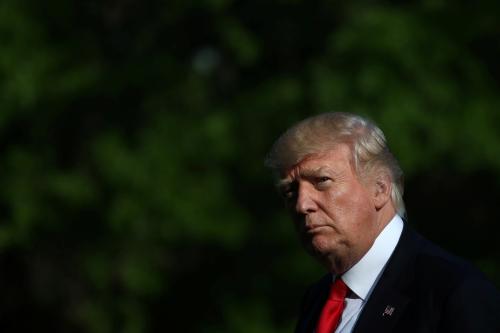This article originally appeared in the Wall Street Journal on June 6, 2017.
Central bankers are always worrying about something. Today, Fed officials are preoccupied with avoiding a repeat of the “taper tantrum” of May 2013. That’s the transitory bond-market turmoil triggered by then-Fed Chairman Ben Bernanke’s talk about tapering Fed bond-buying.
In their meetings, in speeches and probably in Chairwoman Janet Yellen’s press conference next week, Fed officials repeat that they plan to begin passively shrinking their $4.5 trillion portfolio of assets before year-end. The plan is to stop reinvesting all proceeds from maturing bonds and mortgages by a preannounced amount, perhaps letting $5 billion run off the first month and gradually increasing to a pace of $30 billion a month.
The goal is to reduce the chance of a market overreaction and to make sure no one misreads the balance-sheet shrinking as a signal that the Fed intends to tighten credit faster than previously planned.
The goal is to reduce the chance of a market overreaction and to make sure no one misreads the balance-sheet shrinking as a signal that the Fed intends to tighten credit faster than previously planned. San Francisco Fed President John Williams recently promised “the same sort of widely telegraphed, gradual, and—frankly—boring modus operandi that we’ve adopted for normalizing conventional monetary policy.” Philadelphia Fed President Patrick Harker echoed that: “I can also definitively say that it will be boring. It will be the policy equivalent of watching paint dry.”
Mr. Williams added, hopefully, “The more public understanding there is, the lesser the risk of market disruption and volatility.”
It may work as smoothly as the Fed hopes. After all, back in 2013, when the Fed actually tapered, the markets barely flinched. And lately, long-term rates haven’t reacted much to talk of ending reinvestment. In the past, though, the Fed has been surprised by market reaction to something officials thought had been well advertised.
Make no mistake. If buying all those bonds in quantitative easing pushed down long-term interest rates, then shrinking the balance sheet (even if only by letting maturing securities run off) will have the opposite effect. Shrinking the balance sheet has the same effect on the economy as raising short-term rates.
How much? Well, there are estimates, but the truth is that the Fed isn’t sure. It hasn’t done anything like this before. Some of the effect depends on the resolution of a continuing debate: Is it the stock of debt that the Fed holds that weighs down on rates? Or is it the flow of purchases and sales? It’s probably both. Some think more “stock” and others more “flow.”
There is a rough consensus that the Fed’s $3.6 trillion bond-buying in three rounds of QE reduced long-term rates by about 1 full percentage point. If so, Cornerstone’s Roberto Perli figures that, given his predictions of still unannounced details of the Fed’s plan, the shrinking of the Fed balance sheet should add only about 0.1 percentage point to long-term rates each year.
We’ll find out soon whether the Fed’s quest for clarity and calm succeeds.





Commentary
Why the Fed is talking so much about its balance-sheet plan
June 6, 2017